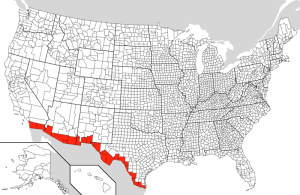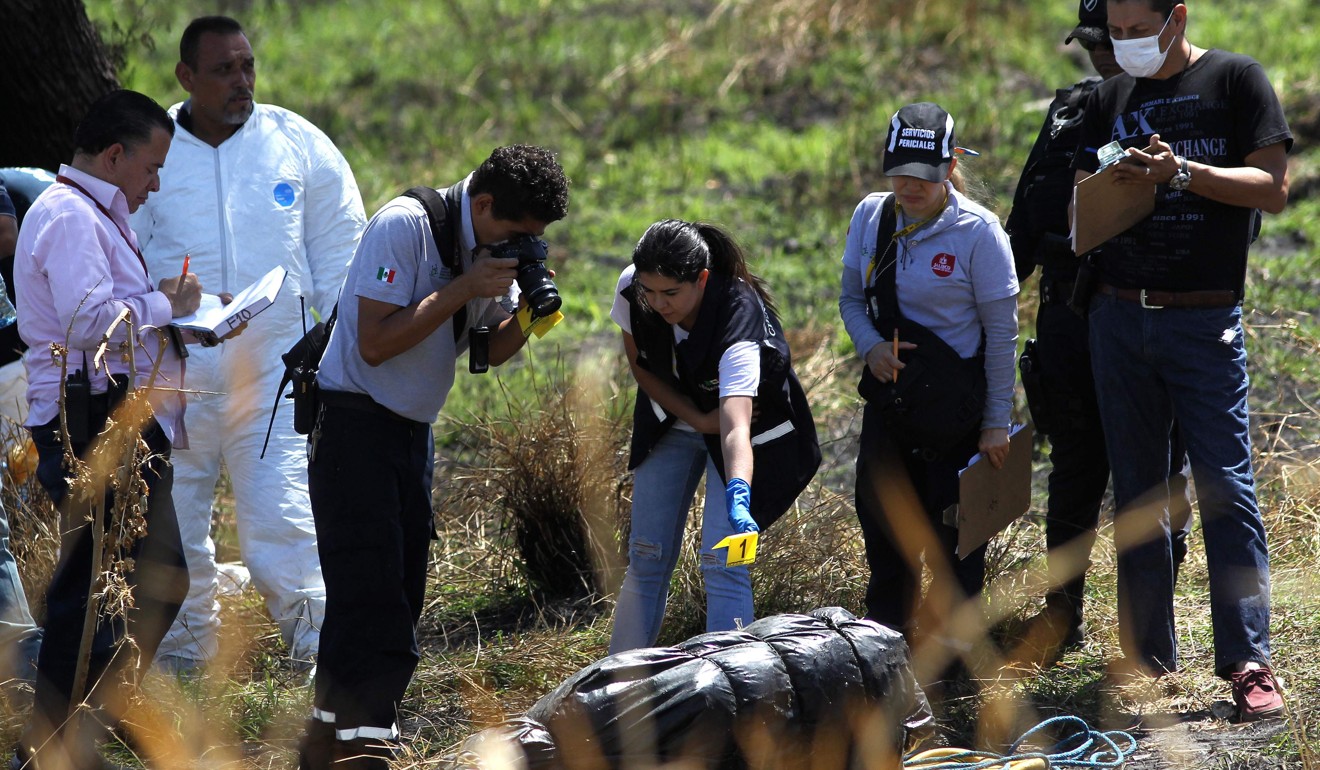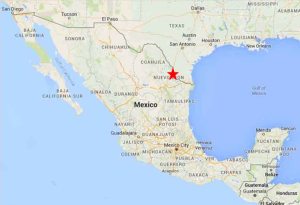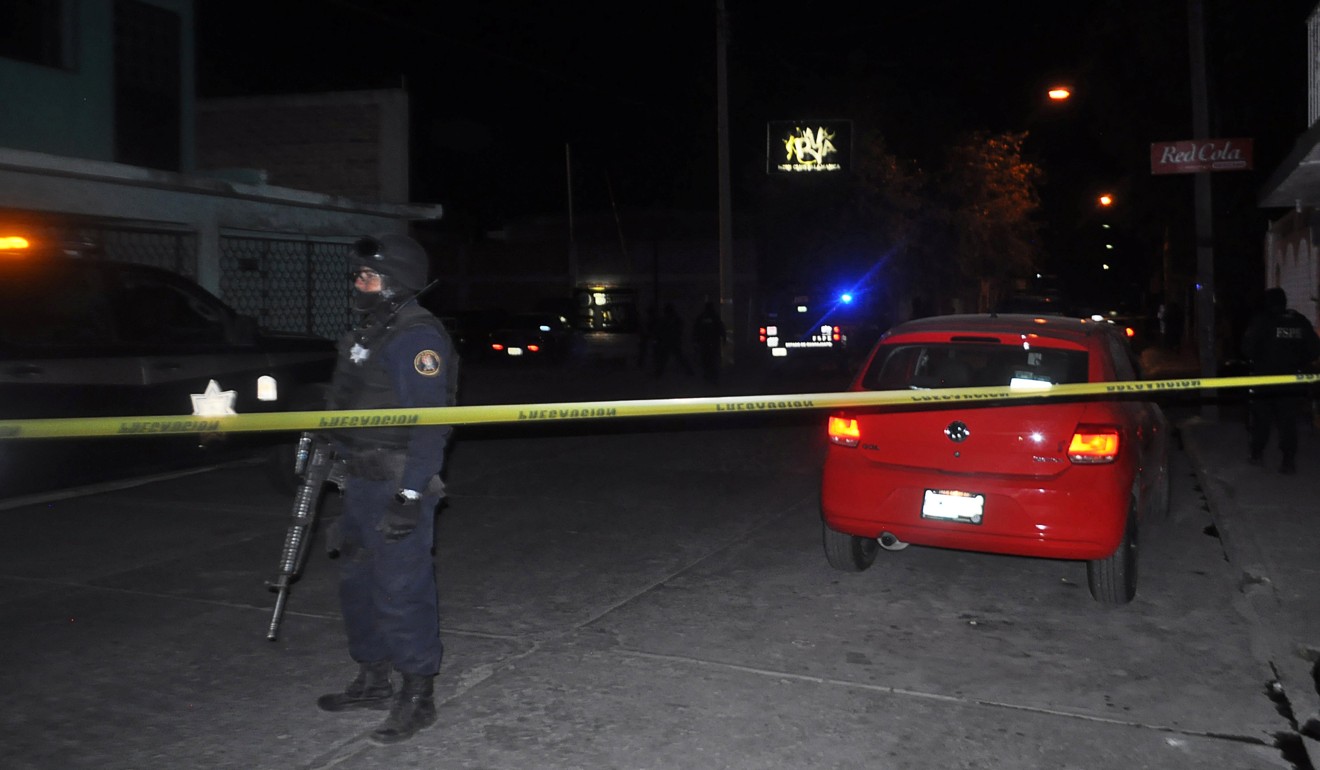 3/15/19, “Five of top six most violent cities in the world are in Mexico, report says,” Tribune News Services
3/15/19, “Five of top six most violent cities in the world are in Mexico, report says,” Tribune News Services
“Drug gangs blamed for Mexico’s violence, while government admits only 7 per cent of crimes are properly investigated and only 2 per cent lead to convictions.”
“Tijuana was the most violent city in the world in 2018, according a new report by a Mexican charity that ranked cities based on their murder rates.
The report by the Citizens’ Council for Public Security and Criminal Justice found that five out of six of the world’s most violent municipalities were in Mexico, where murders have risen to historic levels in recent years amid a military-led war against criminal groups.
In
Tijuana, where local gangs have been battling over a lucrative domestic
drug market, the report tallied 138 killings per 100,000 residents last
year, or about seven killings on average per day. The Mexican resort
city of Acapulco was in second place, with 111 killings per 100,000 people.
Caracas, the Venezuelan capital, which has been beset by crime and food shortages amid the country’s ongoing political crisis, was in third place with 100 killings per 100,000 people.
The fourth and fifth most violent cities were two Mexican border cities: Ciudad Victoria, in the state of Tamaulipas, and Ciudad Juarez, in the state of Chihuahua. Irapuato, a city in the state of Guanajuato that has been the site of fierce battles over control of stolen petrol, is sixth on the list.
There were 15 Mexican cities on the list of 50, more than any other country in the world.
The report paints a picture of a nation in crisis, and calls into question the efficacy of Mexico’s militaristic approach to fighting crime.
Since 2006, when president at the time Felipe Calderon declared war on the country’s drug traffickers,
a combination of soldiers, marines and federal police have taken to the
streets to break up powerful cartels. While the so-called kingpin
strategy was successful in weakening some groups, it also unwittingly spawned new ones who sought to capitalise on the disruption.
Many of those newer groups have branched into businesses beyond drug trafficking and are now involved in fuel theft, migrant smuggling, local drug sales and other forms of illicit activity.

[Image] Forensic experts work in the recovery of at least 10 bodies wrapped in bags found in a river channel in Ixtlahuacan de los Membrillos, Jalisco state on March 14, 2019. Photo: AFP
Mexico’s President Andres Manuel Lopez Obrador campaigned on a promise of pacification,
accusing Calderon of converting “the country into a cemetery”. The
military-led strategy was maintained under Calderon’s successor, Enrique
Pena Nieto, predecessor of Lopez Obrador.
As a
candidate, Lopez Obrador pledged to use economic development, not the
military, to address the causes of crime. He also proposed a controversial amnesty plan that would allow some nonviolent criminals to walk free.
Lopez
Obrador made headlines soon after he was sworn into office when he
declared “there is officially no more war” against criminal groups.
Still, he recently sent a large battalion of soldiers to Tijuana and
has pushed for the creation of a 70,000-member national guard to help
restore public safety.
 Critics say a national guard, which would be made up of ex-soldiers and marines and report in part to the Defence Ministry, would simply be a continuation of the militaristic strategy criticised by Lopez Obrador. What is needed, they say, is more training for police and investments in the justice system.
Government statistics show only about 7 per cent of all crimes are
properly investigated and about 2 per cent lead to convictions.
Critics say a national guard, which would be made up of ex-soldiers and marines and report in part to the Defence Ministry, would simply be a continuation of the militaristic strategy criticised by Lopez Obrador. What is needed, they say, is more training for police and investments in the justice system.
Government statistics show only about 7 per cent of all crimes are
properly investigated and about 2 per cent lead to convictions.
Lopez
Obrador insists the national guard would be different than the military
because unlike the armed forces, it would have the mandate and capacity
to help in criminal investigations.

[Image] A police officer near a bar La Playa
Men’s Club where at least 13 people were killed and seven wounded in a
shooting in Salamanca, Mexico on March 9, 2019. Photo: Reuters
In
recent months, US President Donald Trump has pointed to rising levels of
violence in Mexico as justification for building of a wall between the
two countries.
The US has long played a prominent role in Mexico’s militaristic approach to crime fighting. Since 2008, the US has appropriated more than US$2.6 billion for the Merida Initiative,
a partnership with the Mexican government aimed at disrupting organised
crime and reforming Mexico’s ailing police and justice systems.”
“This article appeared in the South China Morning Post print edition as: ‘Five of world’s six most violent cities in Mexico’”
………….
“Violence in Mexico has come
under added scrutiny in recent months since the U.S. began sending some
Central American migrants who have applied for political asylum back to
Mexico to await rulings in their cases. The program began in Tijuana and is expected to expand to other border cities.
Migrant advocates on both sides of the border decried the program after two Honduran teens were killed in Tijuana late last year while waiting to cross into the U.S., and after more than two dozen migrants were kidnapped off buses in Tamaulipas in recent weeks, not far from the U.S. border.”…
.................

No comments:
Post a Comment